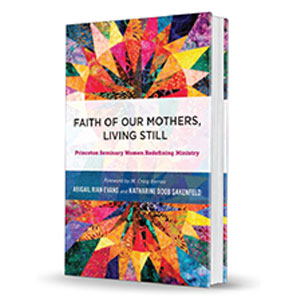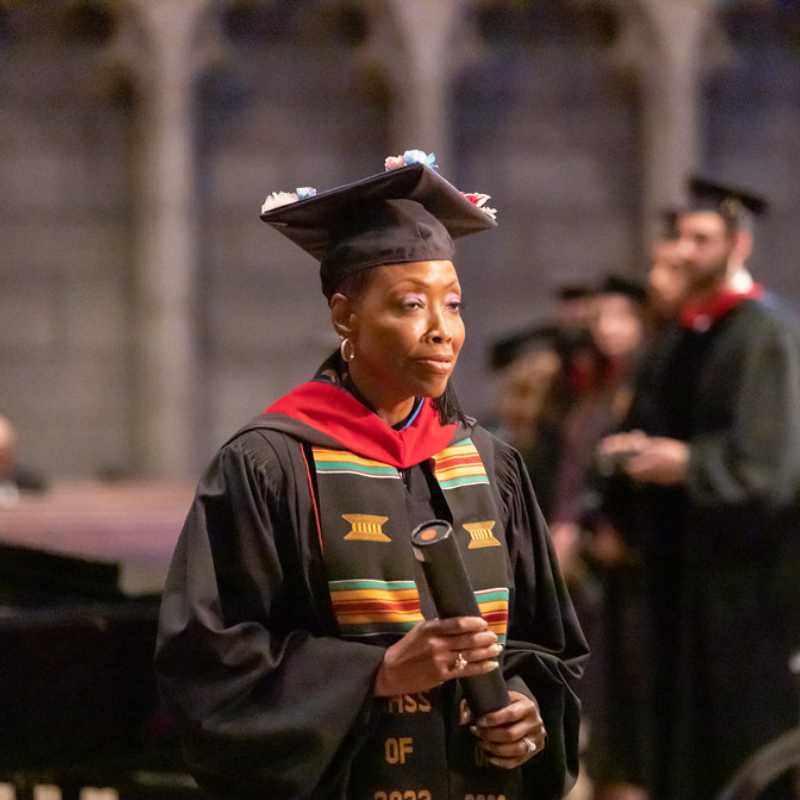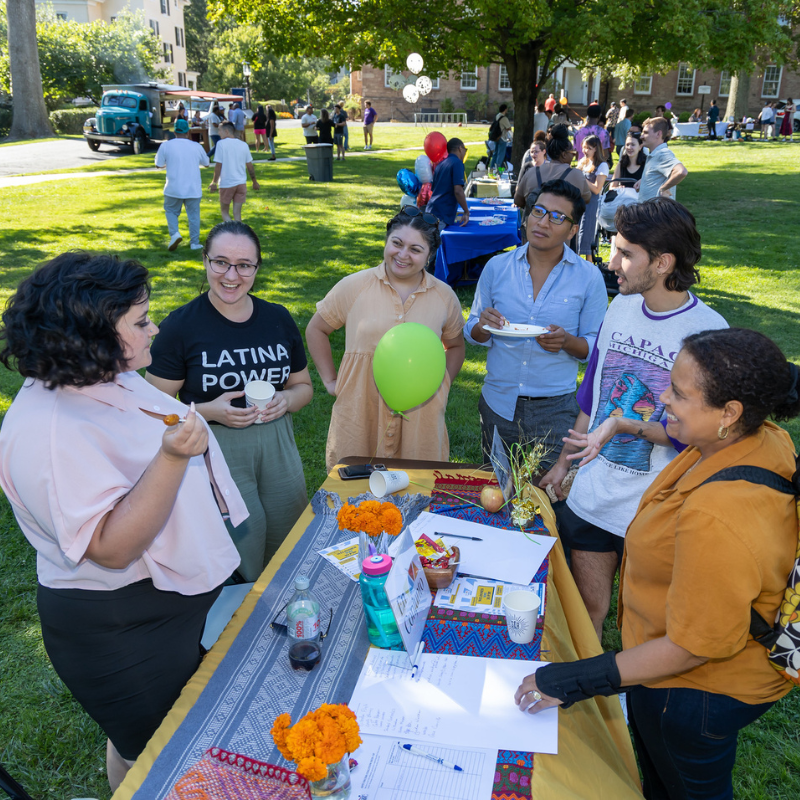Faith of Our Mothers, Living Still
August 13, 2017 | Alumni, Continuing Education, Public, Women in Ministry Initiative

Authors and Professors Emeritae Abigail Rian Evans and Katharine Doob Sakenfeld discuss their new book,
Faith of Our Mothers, Living Still, which will debut at the
Women in Ministry Conference, October 23–25, 2017.
What inspired you to write Faith of Our Mothers, Living Still?
We wanted to tell the stories of Princeton Seminary women in ministry around the world. Despite being unnoticed, underappreciated, and unrecognized by the church and society, they have responded by using their gifts and God’s grace to respond to Christ’s call to serve God and others.
The book features a cross-section of women, and reaches beyond the Seminary community. By reflecting on their stories, we hope this book will broaden the way we celebrate ministry in the twenty-first century and reveal new approaches for theological education. Our research on women’s perspectives informs the closing chapters on the state of ministry and theological education.
We hope this book will broaden the way we celebrate ministry in the twenty-first century and reveal new approaches for theological education.

Abigail Rian Evans
The Office of Alumni Relations, social media, and our advisory committee helped us identify women from twenty different categories of ministry—chaplaincy, the arts, nonprofit administration, public policy, nursing, education, and the parish. We were also intentional about representing geographic, denominational, and racial-ethnic diversity.
What does your research tell us about the state of women in ministry in the past, present, and future?
Our research was always inspiring, sometimes discouraging, yet hopeful for the future of women’s roles in a variety of forms of ministry.
Despite prejudice and limited roles for women in the early years (1812–1950), they found creative and ground-breaking ways to do ministry in a culture that did not recognize women’s leadership. They provided nursing care to civil war soldiers, did mission work in the Sandwich Islands, offered hospitality to seminary students, and taught Sunday School to local canal boatmen.
Contemporary trailblazers emerged as advocates for full inclusion of women in all levels of church leadership in the mid-twentieth century. Women confronted prejudice with anger and prophetic preaching and also with gentle persuasion and political savvy. They were gamechangers who paved the way for their successors. Their leadership demonstrated their vision, advocacy, prophetic voice, and compassion.
Although leadership of women in the mainline Protestant church has increased over the past fifty years, women remain a minority numerically, earn less than their male peers, and are seldom in head-of-staff positions. Our research revealed women’s impact on both the church and the seminary.

Katharine Doob Sakenfeld
We were deeply moved by the tenacity, creativity, and courage of the featured women—many of whom faced daunting obstacles to follow God’s call. One of our most interesting discoveries was how the early pioneers found innovative, and imaginative ways to practice ministry in a dominantly male, hierarchical culture, while maintaining their identity as women and blazing the trail for those to come.
It became clear both that our understanding of ministry needs to change to not be limited to ordained clergy and that theological schools need to look seriously at their curriculum, faculty, and overall purpose in light of the changing understanding of ministry and the emerging group of nonreligious, but spiritually identified young adults.
Our vision for the future is a church where everyone will have a place at a table, a table covered by a tapestry created by the various brilliant colors and textures represented by all the people that God has created.
What do we have to look forward to regarding women’s roles in Christian ministry?
We look forward to the day when the adjective “woman” in ministry will no longer be necessary as a particular designation, but rather there will be recognition that God calls all of us regardless of gender, sexual orientation, race, class, country, or denomination. This vision in no way undermines particular gifts that women bring to ministry, but rather it embraces the fullness of God’s call to all God’s people.
We also pray that men will work alongside women to advocate and insure women’s full inclusion at all levels of the church and in fact in other professions and callings, wherever God may lead them. Our vision for the future is a church where everyone will have a place at a table, a table covered by a tapestry created by the various brilliant colors and textures represented by all the people that God has created.
How can current students and alumni benefit from reading Faith of Our Mothers, Living Still?
Our hope is that not only current students and alumni will benefit from learning about the history and ministries of Princeton Seminary women, but that our readers in other seminaries, denominations, and faith communities will be encouraged to tell their stories. The purpose of this book is not contained within its pages; it is simply a snapshot of the wonderful ministries of Princeton Seminary women.
There are thousands of stories that could be told, and we anticipate gathering more in the Seminary’s Women’s Archives. The goal of the book is to initiate conversations and opportunities for women to encourage, rejoice, and weep with others in ministry, especially with any who struggle on the margins of society, that they too can have a voice and a place in the center.
It has been a privilege to write this book and share these stories. It is our gift to Princeton Seminary and to the larger church, with the hope that it will help to encourage and inspire future women, and the men who support them, to respond to God’s call to ministry wherever it may lead. Faith of our mothers is living still in spite of struggles, pain, and tears.





